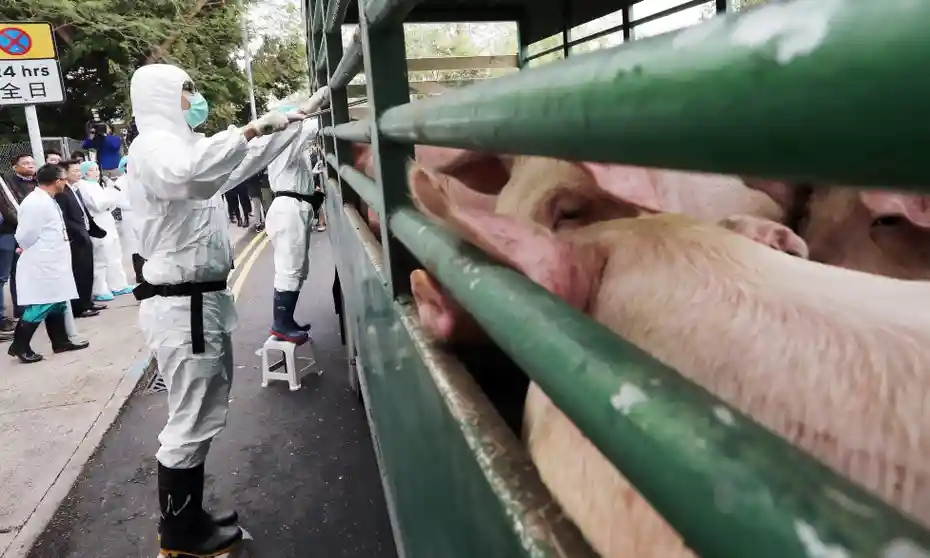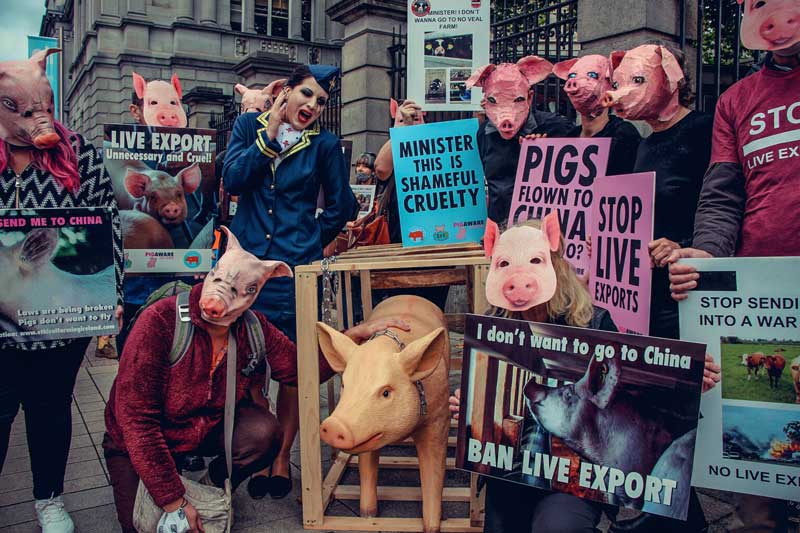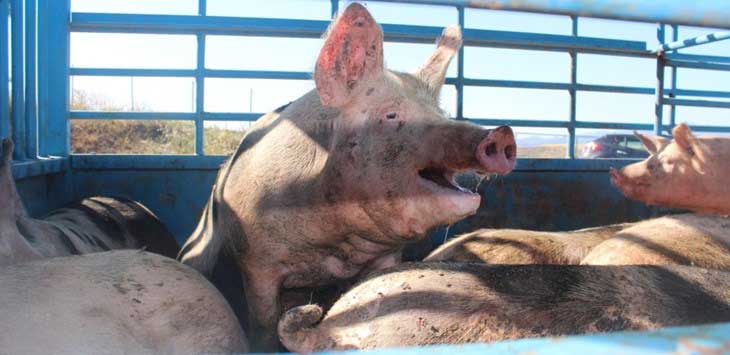
The Case against the Live Export of Pigs
The Minister for Agriculture Charlie McConalogue announced on September 18 that after years of negotiations, Ireland struck a deal with China which would see Ireland exporting sheep meat and live pigs thousands of miles to China. In his announcement, McConalogue described the deal as an “important milestone in gaining access to the Chinese market” and added that the live export of breeding pigs, “is a niche market opportunity” which “reflects well on the breeding population developed by specialist Irish producers”.
According to the government press release on the matter, China accounts for 38% of the global sheepmeat import market and represents a growing market as “[a]verage prices for imported sheep meat in China have more than doubled over the last decade”.
Regarding the interest in breeding pigs, the Chinese pig herd was greatly impacted by African swine fever outbreaks this year as 11 outbreaks were officially reported and new mutations of the virus were identified. African swine fever, or ASF, is a fatal disease commonly found in domesticated pigs and it has been an ongoing problem in China for years as authorities have tried, unsuccessfully, to contain the disease’s spread.
Attempts to control the spread of ASF in China have led to mass cullings of millions of pigs, including by burying pigs alive. Burying pigs alive constitutes extreme animal cruelty and causes immense suffering for these intelligent, sensitive animals. In addition to the suffering and pain caused by such practices, burying animals alive also causes environmental risks and harms as ASF can survive in dead tissue and the decomposition of mass amounts of tissue can easily pollute nearby water sources.

Perhaps unsurprisingly then, McConalogue’s announcement that breeding pigs were to be flown to China was met with harsh criticism from environmentalists and animal rights advocates alike. However, regardless of the destination country, live animal export is intensely cruel, inhumane, and inefficient.
Live animal export
Live animal export routinely comes under scrutiny whenever disaster strikes during transport and thousands of animals are killed. These accidents happen very regularly and it has been shown that livestock ships are actually twice as likely to be lost as cargo vessels. In the last year alone there were dozens of such incidents including the Elbeik ship incident which saw 1,776 cattle stranded in the ocean for three months, the capsizing of the Queen Hind which resulted in 14,000 sheep drowning, and the Gulf Livestock 1 disaster in which 6,000 livestock animals were drowned along with 40 crewmembers.
Along with the risk of drowning or accidents, there are many other factors which negatively impact the health and welfare of animals – and people – as a result of live animal export. The EU regulations which govern live animal transport, Regulation (EC) 1/2005, do not mandate for species-specific transport requirements and are extremely limited in terms of actual welfare standards. The Regulation lacks requirements regarding temperature and humidity ranges and does not have any specific requirements for vulnerable animals such as very young terrestrial animals and breeding animals which are pregnant or which have just given birth.
Another issue which has developed in significance is that there are concerns that long distance transport of stressed animals creates a breeding ground for zoonoses. The European Food Safety Authority reported in 2011 that “stresses associated with handling and transport may cause latent infections with, for instance, Salmonella or Pasteurella sp. that proceed to clinical disease. Such animals are more likely to infect others during the journey or after arrival at their destination, and in many cases (e.g. salmonellosis) this will also increase the risk to public health”.
This is clearly a very current concern; as stated by Eurogroup for Animals’ report on live animal transport, the “link between public health and live animal transport has recently been confirmed by the Covid-19 outbreak”. Covid-19 also demonstrated the fragility of the live animal value chain as even relatively minor disruptions have resulted in mass animal deaths including the slaughter of many young pigs and the stranding of transported animals.

Concern over the welfare of exported pigs is, then, twofold. Activists are concerned about the welfare of pigs during the transport process as the animals will be travelling thousands of miles in order to reach their destination. However, activists are also concerned over the blatant disregard for basic animal welfare standards in China. This is all in addition to concern over the environmental impact of flying tens of thousands of animals around the world every year.
Paths to reform
Eurogroup for Animals has reported that “[o]ver a 13-year period, investigations, assessments, and official reports have revealed the Regulation’s gaps and shortcomings” yet live animal transport continues and “animals can currently…be transported for several days throughout and outside the EU” with minimal oversight of their welfare. Thousands of animals die every year in transit disasters and due to exposure, overcrowding, and neglect during transport and now more than ever before the general public is becoming aware of the horrors of the live transport system.
Eurogroup for Animals advocates for serious revision of Regulation (EC) 1/2005 to include a range of detailed, species-specific requirements to ensure the basic welfare of all transported animals. The suggested provisions include species-specific maximum journey times with a maximum travel time of eight hours, a ban on transporting very young animals, and enhanced enforcement provisions.
Additionally, Eurogroup for Animals reports that, where possible, the transport of animals should be “reduced, refined, and replaced by meat/carcasses and semen/embryos, as recommended by the FVE, OIE, and EFSA”. Ideally animals would also be taken to a nearby slaughterhouse rather than being transported for slaughter. This is becoming increasingly difficult however as the slaughterhouse industry becomes increasingly concentrated into large, factory-like slaughterhouses.

A better way forward
The reforms suggested for live animal export would, if implemented, greatly reduce the suffering of animals being transported both domestically and internationally. That being said, whether the animals are in transit for one hour or twelve, their destination remains the same – an abattoir or a breeding lot followed by an abattoir. Similarly, although the transport of carcasses or meat is preferable to the transport of live animals on welfare grounds, animals are nonetheless being slaughtered in either case.
Animal cruelty and exploitation is an inherent element of animal agriculture and although welfare reform can reduce suffering, animals in the agriculture industry are, no matter how high the welfare standards, exploited and slaughtered. While largescale reforms are difficult to implement, everyone can help to reduce reliance on animal agriculture by prioritising plant based meals where possible or even better by going vegan.
